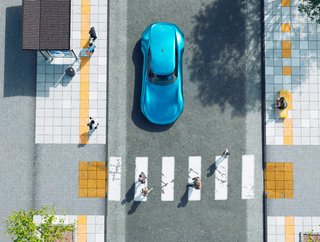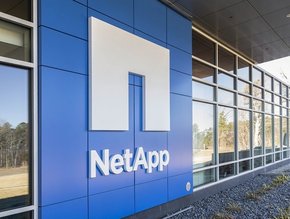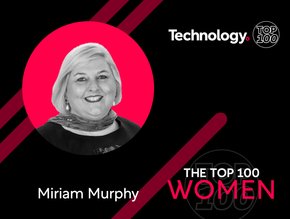How IoT and AI are Driving More Sustainable Smart Cities

Today, some 56% of the world's population or 4.4 billion inhabitants live in cities. In today's evolving urban landscapes, the integration of Internet of Things (IoT) technology and AI-driven analytics is transforming these rapidly-growing cities into smarter, more efficient, and sustainable environments.
These smart cities leverage IoT to enhance the quality of life for residents by optimising various urban functions such as traffic flow, infrastructure maintenance, energy management, pollution control, and public safety.
How IoT devices contribute to greener, more sustainable smart cities
When managed well, smart cities contribute to more sustainable societies by using live data from different types of sensors to improve the quality of life, public safety, efficiency and sustainability of cities and the people who live in them, comments Bjorn Andersson, Senior Director of Global Digital Innovation Marketing and Strategy at Hitachi Vantara.
“These sensors collect specific data that is analysed to inform and instruct – in real time – how the city operates,” he says. “For example, sensor data could be used to develop intelligent street lighting infrastructure, where the brightness of the lights will adjust based on motion detection, saving energy when the streets have less footfall.
“The opportunities are endless and, while we’ve got some way to go until all cities across the globe can benefit from such technology, there are still significant instances of smart city technology being utilised by many cities today.”
Sustainability is the biggest problem facing cities - and by far the biggest contributor is cars. As Tikiri Wanduragala, Senior Consultant for Infrastructure Solutions at Lenovo, describes, IoT devices will help reduce traffic, and direct autonomous vehicles efficiently through the streets of smart cities. “Deliveries which are not successful the first time are a key driver of congestion, as drivers have to return to the same address repeatedly. In a smart city, location data that shows when a customer is home can be shared anonymously through IoT devices with delivery companies - with their consent - so that more deliveries arrive on the first attempt.”
The role of cloud in handling the large amount of data generated by IoT devices
In 2021, there were over 10 billion IoT devices in the world, and by 2025, IDC expects global data generation to exceed 73 zettabytes. To manage this quantity of data is a challenge.
“Smart cities are deploying thousands of sensors today, and we expect this trend to grow rapidly,” says Kurt Semba, Principal Architect – Office of the CTO at Extreme Networks. “The cloud is an ideal space for storing and analysing this vast amount of data to gain actionable insights as well as a deeper understanding of historical and future trends.”
The cloud plays an important role when it comes to handling large amounts of data generated by IoT devices, however a high bandwidth, low-latency network is vital, Wanduragala adds. “While reliable and affordable 5G is rolling out across cities, network connectivity is still lacking for many smart cities across the world.”
The answer to this is edge computing: a distributed computing paradigm that brings computer and data storage closer to the sources of data.
“Edge technology allows faster decisions to be made, and data processed in real-time within the device itself, as opposed to needing to send information to a faraway data centre for processing,” Wanduragala explains. “Response times are therefore quicker – a key factor when it comes to managing the high bandwidth technologies that are essential for smart cities and ensuring that they are a success.
“An edge computing network also tends to be more reliable and cost-efficient – a win-win for local governments. This is because, with on-device decision making via AI, data does not have to be stored on a cloud network as only important data is processed.”
AI alongside IoT devices helping improve smart cities
According to Wanduragala, AI has a crucial role to play alongside IoT devices for smart cities of the future.
“In today’s smart cities, the focus has always been on capturing data: whether that’s for monitoring traffic hotspots or looking for water leaks. But in years to come the city itself will respond dynamically to the changing physical world, adjusting energy use in real-time to respond to the weather, for example.
“The evolution of monitoring has come from a machine-to-machine foundation, with the introduction of the IoT and now AI becoming transformational in enabling smart technologies to become dynamic. Emerging AI technologies such as large language models will also play a role going forward, making it easy for both city planners and ordinary citizens to interact with the city they live in.”
What are the challenges to overcome to see greater use of IoT devices in cities?
Despite these advancements, challenges remain in the broader adoption of IoT in urban environments. Andersson points out that building trust among citizens regarding data management and security is essential.
“Many citizens interact with IoT devices and sensors every day, whether they’re aware of it or not. These devices include healthcare and fitness gadgets like smartwatches, temperature controls such as air conditioning and heating systems, and home security features. However, not all citizens may be familiar with or trusting such technology or how the data is managed and secured,” he says.
“It’s therefore imperative to overcome any gaps in trust between citizens, businesses, and government. We must work together to create awareness and encourage citizen participation in smart cities because after all, solutions must be developed first and foremost with the citizen’s needs and concerns in mind. It’s a collaborative process and diverse perspectives are needed.
“The goal for smart cities should be to utilise insights from data to make a real difference on society and the physical world around us. This means clearly setting out the goals and objectives that will be achieved through deployment of technology or digital solutions.”
As Wanduragala describes, smart city technology has the power to improve lives, but to deliver on this promise, private enterprises and governments need to work together harmoniously. “For instance, transport companies and central government can improve services by rapid data-sharing at the network’s edge. At present, business leaders have been hesitant to collaborate, with less than half of them sharing data with external partners, citing costs and security concerns as barriers.
“If data is used to its full potential, then it will be a major step-change in the evolution of cities, especially when it comes to harnessing the huge amounts of data generated by IoT sensors,” he concludes. “IoT technology is pivotal to how smart cities work, delivering data on everything from local weather conditions to traffic information, harvested via networks of sensors across the city.
“While executives are aware of the power of data, they are still cautious about using it to deal with real-world problems, or perhaps are simply unable to extract its true value to do so.”
******
Make sure you check out the latest edition of Technology Magazine and also sign up to our global conference series - Tech & AI LIVE 2024
******
Technology Magazine is a BizClik brand







